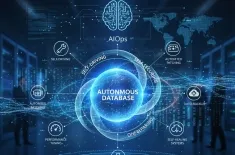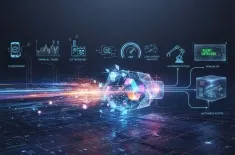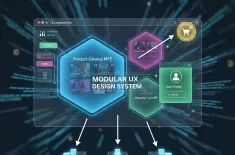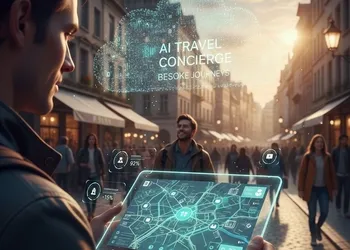Discover Next-Gen Hyper-Converged Infrastructure (HCI).
The modern digital economy demands an IT infrastructure that is agile, scalable, and effortlessly manageable. For years, the traditional three-tier architecture—separate silos for compute, storage, and networking—was the status quo. However, this fragmented approach led to complexity, high costs, and debilitating management overhead. The revolution began with Hyper-converged infrastructure (HCI), a foundational technology that transformed the data center by tightly integrating these components into a single, software-defined infrastructure platform.
Today, the first generation of HCI is rapidly giving way to its successor: Next-Gen HCI. This new evolution is not just an incremental update; it represents a paradigm shift, incorporating advanced technologies like AI, disaggregation, and containerization to deliver a true enterprise cloud experience. Next-Gen HCI is the blueprint for the simplified data center of the future, acting as the essential building block for rapid private cloud deployment and sophisticated multi-cloud strategies.
The Evolution of HCI: From Convergence to Intelligence
The journey of Hyper-converged infrastructure (HCI) is one of progressive simplification and integration. Its core premise was, and remains, the use of a distributed software layer to unify the functions of compute, storage, and networking, running on industry-standard x86 server hardware.
The Foundation: First-Generation HCI (2010s)
The first wave of HCI was characterized by:
- Tight Integration: Compute and storage were merged into a single appliance or node, typically using direct-attached storage (DAS).
- Software-Defined Storage (SDS): A core component that abstracted the local drives across all nodes into a single, distributed storage pool.
- Unified Virtualization: The platform was built around a hypervisor layer, enabling simple management of Virtual Machines (VMs) and resources from a single console.
- Scale-Out Simplicity: Scaling was achieved by simply adding new nodes, providing linear increases in both compute and storage capacity simultaneously.
While revolutionary for VDI (Virtual Desktop Infrastructure) and remote/branch offices (ROBO), this generation had limitations. Its fixed-ratio scaling meant that if a company needed more compute but not storage (or vice versa), they were forced to purchase resources they didn't need, leading to resource inefficiency and "storage tax."
The Arrival of Next-Gen HCI (HCI 2.0)
The latest evolution, often referred to as HCI 2.0, directly addresses the limitations of its predecessor and embraces modern workload demands. This generation shifts the focus from simple consolidation to intelligent, cloud-ready infrastructure.
The key driver behind Next-Gen HCI is the demand for unified virtualization across disparate environments and the capability for an enterprise to build a truly flexible, high-performance private cloud.
Defining Next-Gen HCI: Key Architectural Pillars
Next-Gen HCI is defined by a set of architectural innovations that enhance flexibility, performance, and management autonomy.
Disaggregated HCI (dHCI)
To solve the fixed-ratio scaling problem, a major pillar of Next-Gen HCI is disaggregation.
- Independent Scaling: Unlike traditional HCI, which requires adding combined compute/storage nodes, dHCI allows for the independent scaling of compute (servers) and storage (dedicated storage nodes or arrays). This restores the financial efficiency of scaling, letting IT teams add only the resources necessary for a specific workload's need.
- Workload Flexibility: This architecture makes HCI suitable for a broader range of high-performance and business-critical workloads, such as large databases and tier-1 applications, which often have highly variable demands for CPU versus storage IOPS.
- High Availability & Performance: By logically separating storage from compute, dHCI can offer higher availability and consistent, predictable performance that rivals traditional SAN (Storage Area Network) environments, but with the operational simplicity of HCI.
AI and Machine Learning (AI/ML) Integration
The infusion of artificial intelligence and machine learning is perhaps the most transformative aspect of Next-Gen HCI.
- Predictive Operations: AI/ML engines analyze vast amounts of performance and capacity data across the cluster to predict hardware failures, resource saturation, and performance anomalies before they impact applications. This shifts IT operations from reactive firefighting to proactive management.
- Self-Managing Infrastructure: These intelligent systems automate routine tasks like load balancing, storage tiering, and capacity planning. The goal is a self-optimizing, self-healing infrastructure that requires minimal human intervention, dramatically reducing operational expenditure (OpEx).
- Resource Optimization: AI algorithms dynamically allocate and reallocate resources (CPU, RAM, IOPS) based on real-time workload needs, ensuring optimal performance for critical applications while maximizing the utilization of the underlying hardware pool.
Container and Microservices Integration
The rise of cloud-native applications necessitates infrastructure that can seamlessly support containers.
- Native Kubernetes Support: Next-Gen HCI platforms offer deep, native integration with container orchestration tools like Kubernetes. They provide persistent storage volumes for stateful containers, ensuring data remains available and durable.
- Unified Management Plane: IT teams can now manage VMs and containers from the same central console, simplifying the deployment, monitoring, and security of both traditional and cloud-native workloads within the same software-defined infrastructure.
The Role of Next-Gen HCI in Private Cloud Deployment
The ultimate promise of HCI has always been to simplify the process of building and managing a private cloud deployment. Next-Gen HCI is fulfilling this promise by providing a cloud-like experience on-premises.
Cloud Agility and Operating Model
Next-Gen HCI offers the same agility, simplicity, and self-service capabilities that enterprises appreciate in public cloud providers, but within the secure, controlled environment of their own data center.
- Simplified Data Center: By eliminating the need for disparate components like SANs, separate networking fabrics, and multiple management consoles, Next-Gen HCI truly enables a simplified data center. Management is reduced to a few clicks from a single unified virtualization pane, allowing IT staff to focus on strategic business initiatives rather than infrastructure maintenance.
- Rapid Provisioning: Deploying a complete virtualized environment (compute, storage, and network settings) can be done in minutes, not weeks. This speed is crucial for DevOps pipelines, test/development environments, and quickly responding to business demands.
- Infrastructure-as-Code (IaC) Ready: The software-defined nature of Next-Gen HCI makes it an ideal target for automation tools. Infrastructure deployment and management can be codified and automated, further enhancing the cloud operating model.
Hybrid and Multi-Cloud Readiness
No enterprise today operates in a single cloud. Next-Gen HCI serves as the critical anchor for a hybrid and multi-cloud strategy.
- Workload Mobility: Modern HCI solutions offer seamless workload mobility, allowing VMs and data to be replicated or migrated easily between the on-premises private cloud deployment and various public clouds (AWS, Azure, Google Cloud).
- Consistent Experience: By running the same or a compatible software-defined infrastructure stack both on-premises and in the public cloud, IT teams maintain a consistent operating model, reducing complexity and the need for specialized public cloud skills.
- Edge Computing Enablement: The compact, scalable, and easy-to-manage nature of Next-Gen HCI nodes makes them perfect for deploying at the network edge (e.g., remote offices, manufacturing plants, retail stores). This enables real-time data processing closer to the source, a non-negotiable requirement for IoT and AI applications.
Next-Gen HCI Use Cases and Business Value
The adoption of Next-Gen HCI is being driven by its ability to tackle complex, modern IT challenges while providing measurable business value.
Business-Critical Applications (BCAs)
First-gen HCI often struggled with the unpredictable, high-demand nature of Tier-1 applications like SAP, Oracle, or large-scale Microsoft SQL databases. Next-Gen dHCI, with its independent scaling of compute and storage, is now an ideal platform for BCAs, delivering:
- Guaranteed Performance: Unified virtualization with AI-driven Quality of Service (QoS) ensures that resource-hungry applications get the dedicated IOPS and CPU they require.
- Seamless Upgrades: The architecture allows for non-disruptive, rolling upgrades, minimizing downtime for mission-critical systems.
Virtual Desktop Infrastructure (VDI)
VDI remains a foundational use case, but Next-Gen HCI enhances it significantly.
- Massive Scalability: VDI deployments often experience "boot storms" (a sudden, simultaneous demand for compute and storage when users log in). The enhanced performance and flexibility of dHCI handle these peaks with greater ease, providing a consistent, high-quality user experience.
- Simplified Management: Deploying thousands of virtual desktops is managed centrally from the single simplified data center console, drastically reducing the time and complexity of VDI rollouts.
Remote and Branch Office (ROBO) Solutions
For companies with numerous distributed locations, Next-Gen HCI provides a resilient, turn-key solution.
- Centralized Control: IT operations can manage the infrastructure for hundreds of remote sites from headquarters, using the same software-defined infrastructure tools they use for their main data center.
- Small Footprint: Highly compact, often 2-node or 3-node clusters, fit into small office spaces while providing enterprise-grade resilience and data protection.
The Future Trajectory: Autonomous Infrastructure
The ultimate evolution of Next-Gen HCI is the move toward fully autonomous infrastructure. This future state will see platforms that are entirely self-governing, self-protecting, and self-optimizing.
- AIOps Maturity: The role of Artificial Intelligence in IT Operations (AIOps) will grow to include automated remediation of complex issues, eliminating the need for human administrators to triage most infrastructure alerts.
- True Cloud Consumption Model: The commercial models for HCI will mirror the public cloud, allowing customers to pay for IT resources on a consumption basis within their own private cloud deployment. This shifts the focus from capital expenditure (CapEx) on hardware to operational expenditure (OpEx) for services.
- Security Integration: Security will be intrinsically woven into the software-defined infrastructure, utilizing micro-segmentation, AI-driven threat detection, and automated policy enforcement at the hypervisor level to protect every virtual machine and container.
In conclusion, Next-Gen Hyper-converged infrastructure (HCI) is redefining the modern data center. By moving beyond simple consolidation to embrace disaggregation, AI, and cloud-native capabilities, it provides the agility, scalability, and simplified management necessary for any enterprise looking to build a high-performance, cost-effective private cloud deployment. It is the essential platform for delivering the next wave of digital transformation.



































